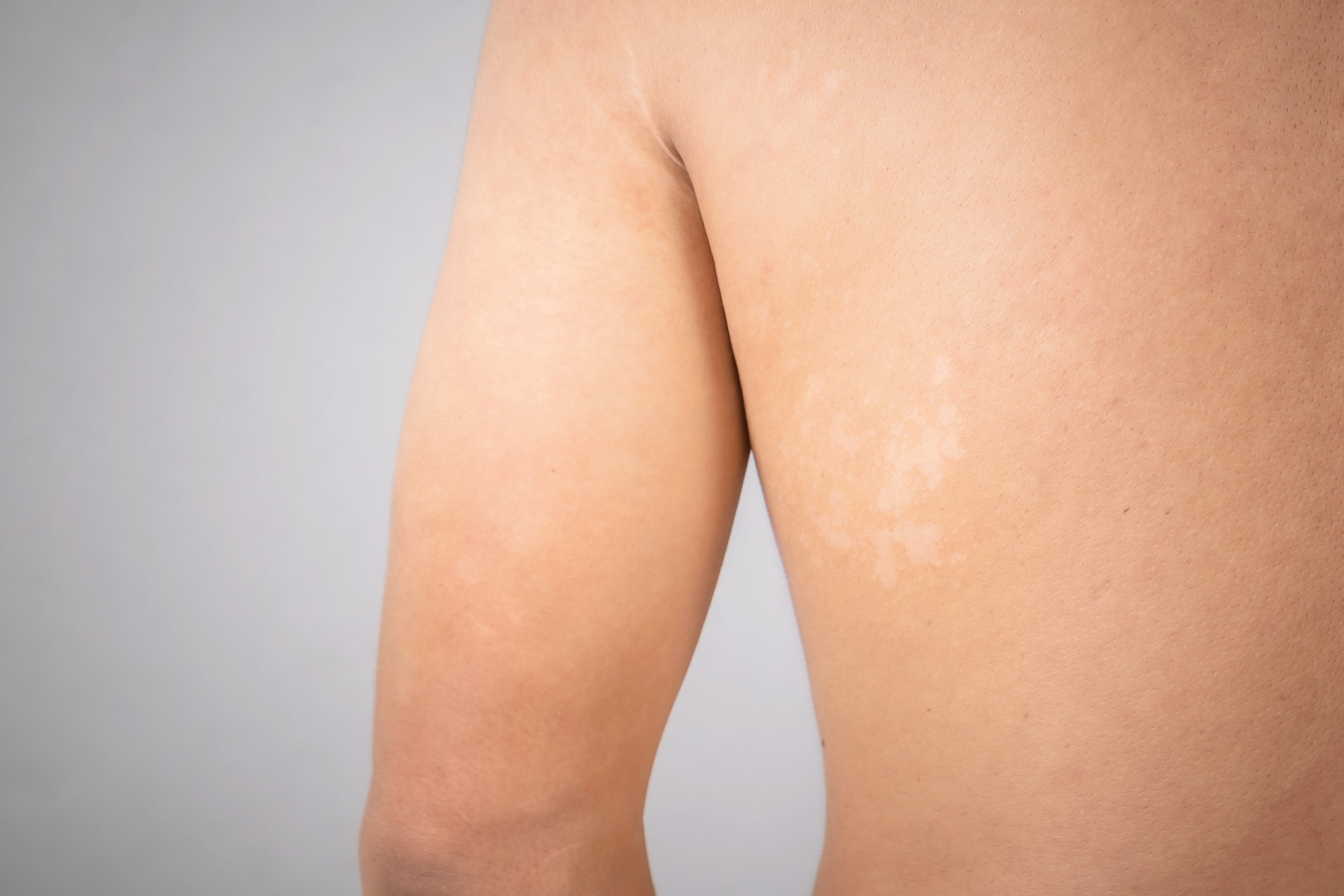Cart
0
Living with tinea versicolor, a common fungal skin infection, can be challenging. An often-overlooked aspect of managing this condition is the impact of diet on its symptoms. What you eat can significantly influence your skin's health and the severity of tinea versicolor. We will explore the importance of maintaining a balanced diet and incorporating specific nutrients to support your skin's recovery and minimize flare-ups.
1. Understanding the Role of Diet:
While diet alone cannot cure tinea versicolor, it plays a crucial role in supporting your overall skin health. A well-balanced diet provides essential nutrients that strengthen your immune system, promote healthy skin cell turnover, and regulate the overgrowth of the yeast responsible for tinea versicolor.
2. Anti-Inflammatory Foods:
Incorporating anti-inflammatory foods into your diet can help reduce the inflammation associated with tinea versicolor. Focus on consuming foods rich in omega-3 fatty acids, such as fatty fish (salmon, mackerel), walnuts, and flaxseeds. Additionally, include fruits and vegetables high in antioxidants, like berries, leafy greens, and colorful bell peppers, which help combat oxidative stress and support skin healing.
3. Probiotics for Gut Health:
Maintaining a healthy balance of gut flora is vital for overall immune function and skin health. Probiotics, found in fermented foods like yogurt, sauerkraut, and kefir, can help restore the natural balance of beneficial bacteria in your gut. A healthy gut microbiome can enhance your body's defense mechanisms and potentially reduce the occurrence of tinea versicolor flare-ups.
4. Incorporating Antifungal Foods:
Some foods possess natural antifungal properties, which can complement traditional treatments for tinea versicolor. Garlic, ginger, coconut oil, and oregano are known for their antifungal properties. Including these ingredients in your meals may help inhibit the growth of the yeast responsible for tinea versicolor.
5. Hydration and Skin Health:
Proper hydration is essential for maintaining healthy skin. Drinking an adequate amount of water throughout the day helps keep your skin hydrated and supports its natural detoxification processes. Aim for at least eight glasses of water daily and limit the consumption of sugary or caffeinated beverages, as they can dehydrate the body and potentially exacerbate tinea versicolor symptoms.
6. Avoiding Trigger Foods:
While certain foods can support skin health, others may trigger or worsen tinea versicolor symptoms. It's wise to identify any potential food sensitivities or triggers that may exacerbate your condition. Common culprits include refined sugars, processed foods, excessive alcohol consumption, and high-glycemic index foods. By avoiding these triggers, you can potentially reduce the frequency and intensity of flare-ups.
Conclusion:
When dealing with tinea versicolor, adopting a skin-friendly diet can be a valuable complement to your treatment plan. By nourishing your body with nutrient-dense foods, anti-inflammatory ingredients, and probiotics, you can support your immune system, maintain healthy skin, and potentially reduce the severity of tinea versicolor symptoms. Remember to consult with a healthcare professional or registered dietitian to personalize your dietary approach and ensure it aligns with your specific needs. Together with proper medical care, a balanced diet can contribute to your overall well-being and empower you on your journey towards healthier skin.
1. Understanding the Role of Diet:
While diet alone cannot cure tinea versicolor, it plays a crucial role in supporting your overall skin health. A well-balanced diet provides essential nutrients that strengthen your immune system, promote healthy skin cell turnover, and regulate the overgrowth of the yeast responsible for tinea versicolor.
2. Anti-Inflammatory Foods:
Incorporating anti-inflammatory foods into your diet can help reduce the inflammation associated with tinea versicolor. Focus on consuming foods rich in omega-3 fatty acids, such as fatty fish (salmon, mackerel), walnuts, and flaxseeds. Additionally, include fruits and vegetables high in antioxidants, like berries, leafy greens, and colorful bell peppers, which help combat oxidative stress and support skin healing.
3. Probiotics for Gut Health:
Maintaining a healthy balance of gut flora is vital for overall immune function and skin health. Probiotics, found in fermented foods like yogurt, sauerkraut, and kefir, can help restore the natural balance of beneficial bacteria in your gut. A healthy gut microbiome can enhance your body's defense mechanisms and potentially reduce the occurrence of tinea versicolor flare-ups.
4. Incorporating Antifungal Foods:
Some foods possess natural antifungal properties, which can complement traditional treatments for tinea versicolor. Garlic, ginger, coconut oil, and oregano are known for their antifungal properties. Including these ingredients in your meals may help inhibit the growth of the yeast responsible for tinea versicolor.
5. Hydration and Skin Health:
Proper hydration is essential for maintaining healthy skin. Drinking an adequate amount of water throughout the day helps keep your skin hydrated and supports its natural detoxification processes. Aim for at least eight glasses of water daily and limit the consumption of sugary or caffeinated beverages, as they can dehydrate the body and potentially exacerbate tinea versicolor symptoms.
6. Avoiding Trigger Foods:
While certain foods can support skin health, others may trigger or worsen tinea versicolor symptoms. It's wise to identify any potential food sensitivities or triggers that may exacerbate your condition. Common culprits include refined sugars, processed foods, excessive alcohol consumption, and high-glycemic index foods. By avoiding these triggers, you can potentially reduce the frequency and intensity of flare-ups.
Conclusion:
When dealing with tinea versicolor, adopting a skin-friendly diet can be a valuable complement to your treatment plan. By nourishing your body with nutrient-dense foods, anti-inflammatory ingredients, and probiotics, you can support your immune system, maintain healthy skin, and potentially reduce the severity of tinea versicolor symptoms. Remember to consult with a healthcare professional or registered dietitian to personalize your dietary approach and ensure it aligns with your specific needs. Together with proper medical care, a balanced diet can contribute to your overall well-being and empower you on your journey towards healthier skin.





